5 design tips to steal from a Sussex kitchen brimming with rustic charm
This English countryside home dates back to the 17th century, but its kitchen has some very modern ideas
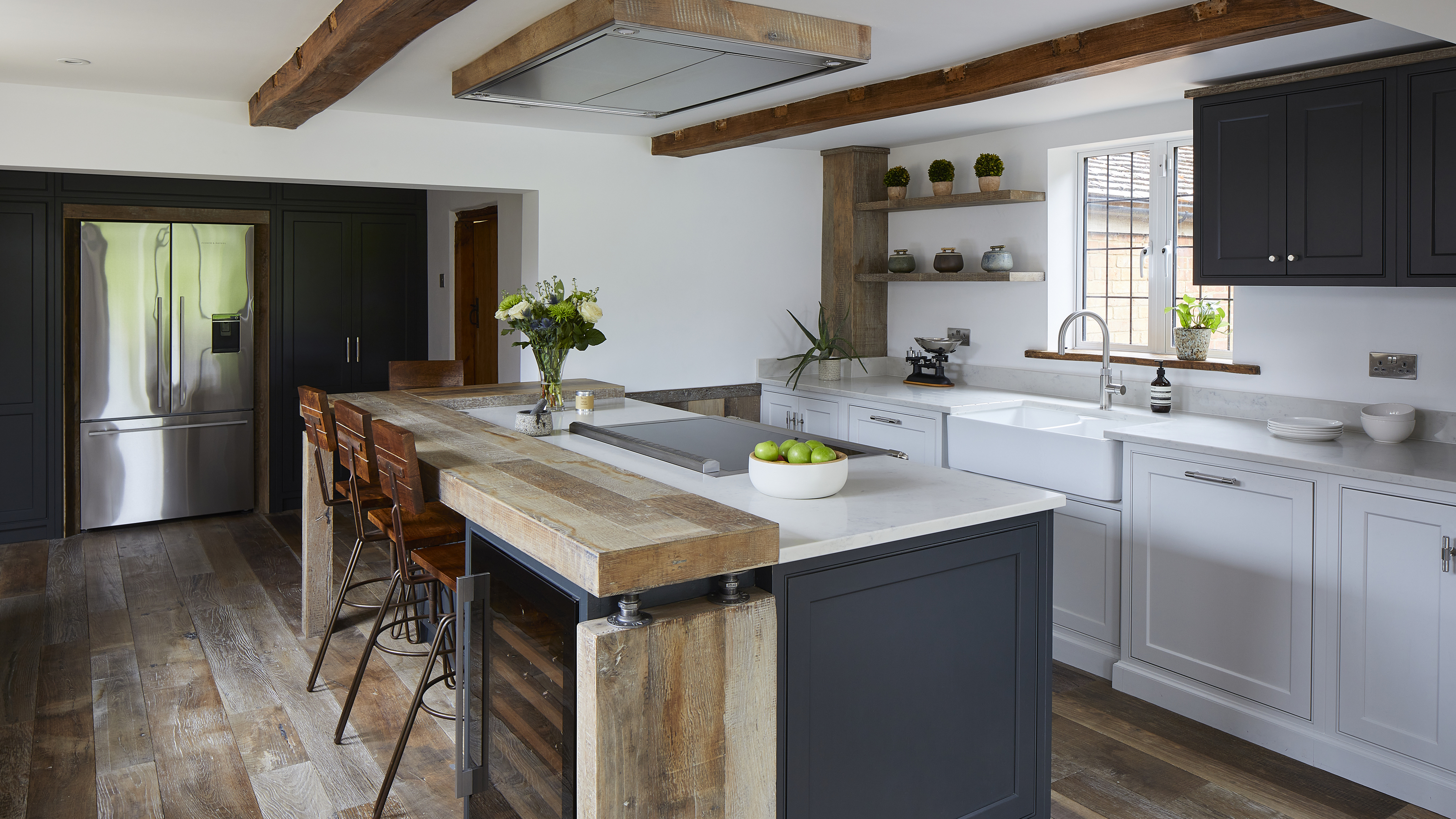

In the heart of the English countryside, a 17th century detached family home now has the versatile, and historically sympathetic kitchen its owners dreamed of.
‘The brief was to design an open-plan social space that remained in keeping with the era of the property,’ said Alex Main, Director of The Main Company. ‘To achieve this we installed a large kitchen island with additional breakfast bar seating and kept the décor light and airy.’
As part of this full property renovation in rural Sussex, The Main Company were charged with creating kitchen ideas for an open-plan space that would serve as the family’s communal hub.
We took a tour of the space and talked to Main about how they created this charmingly rustic kitchen with modern touches and sustainable secrets.
1. Get raw with reclaimed wood
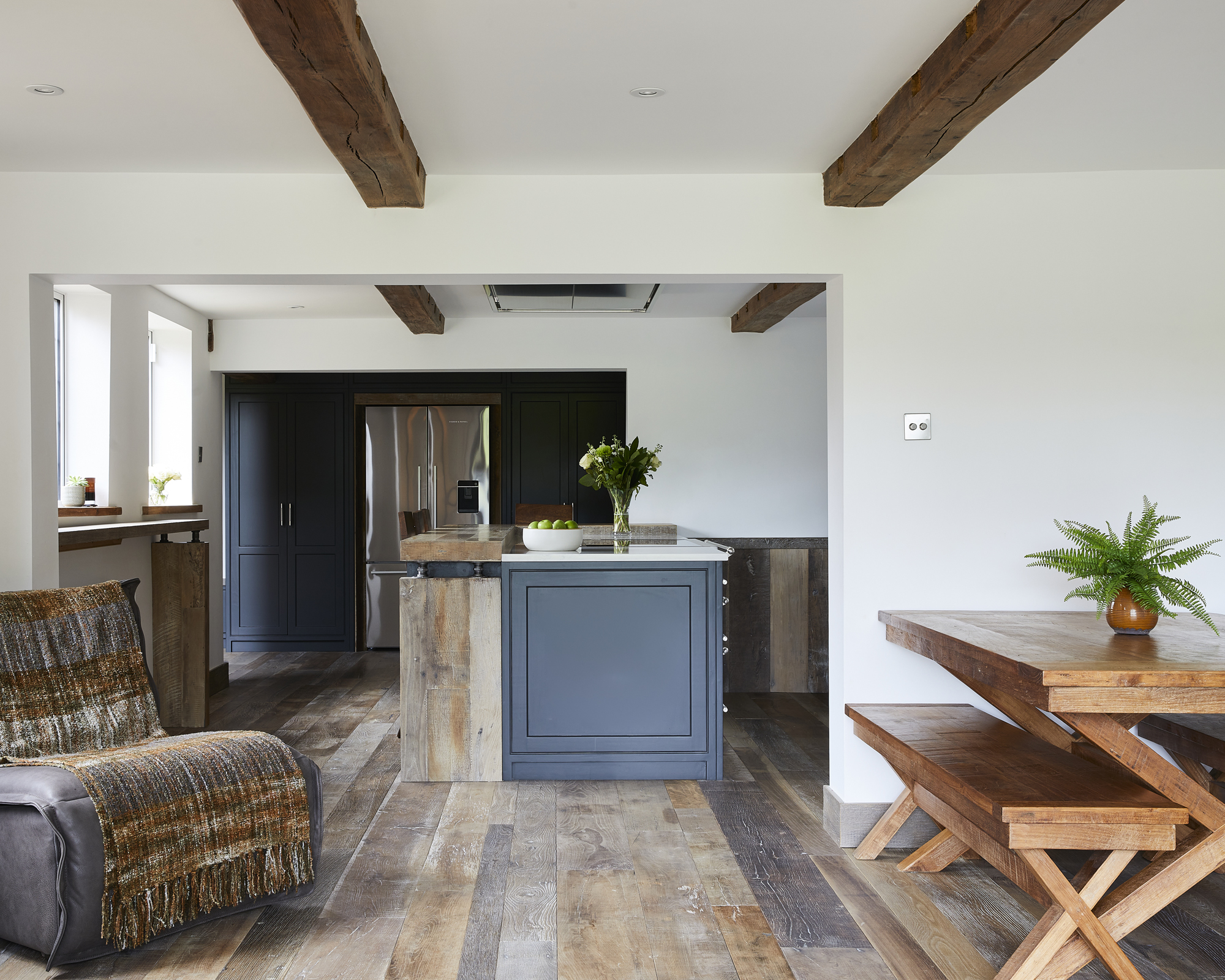
Using unpainted wood will usually lend a touch of rusticity to any kitchen – but for a farmhouse feel that is as good for the world as it looks, choose raw, reclaimed wood. A more sustainable choice than newly sourced lumber, it also lends a historic feel to new kitchens.
As well as exposing beams and adding accents through wooden shelving and surfaces, The Main Company also installed a reclaimed barn oak floor that runs through the kitchen and into the living room. The floor’s uneven tones and grains create a true farmhouse kitchen feel.
2. Ensure your island is versatile
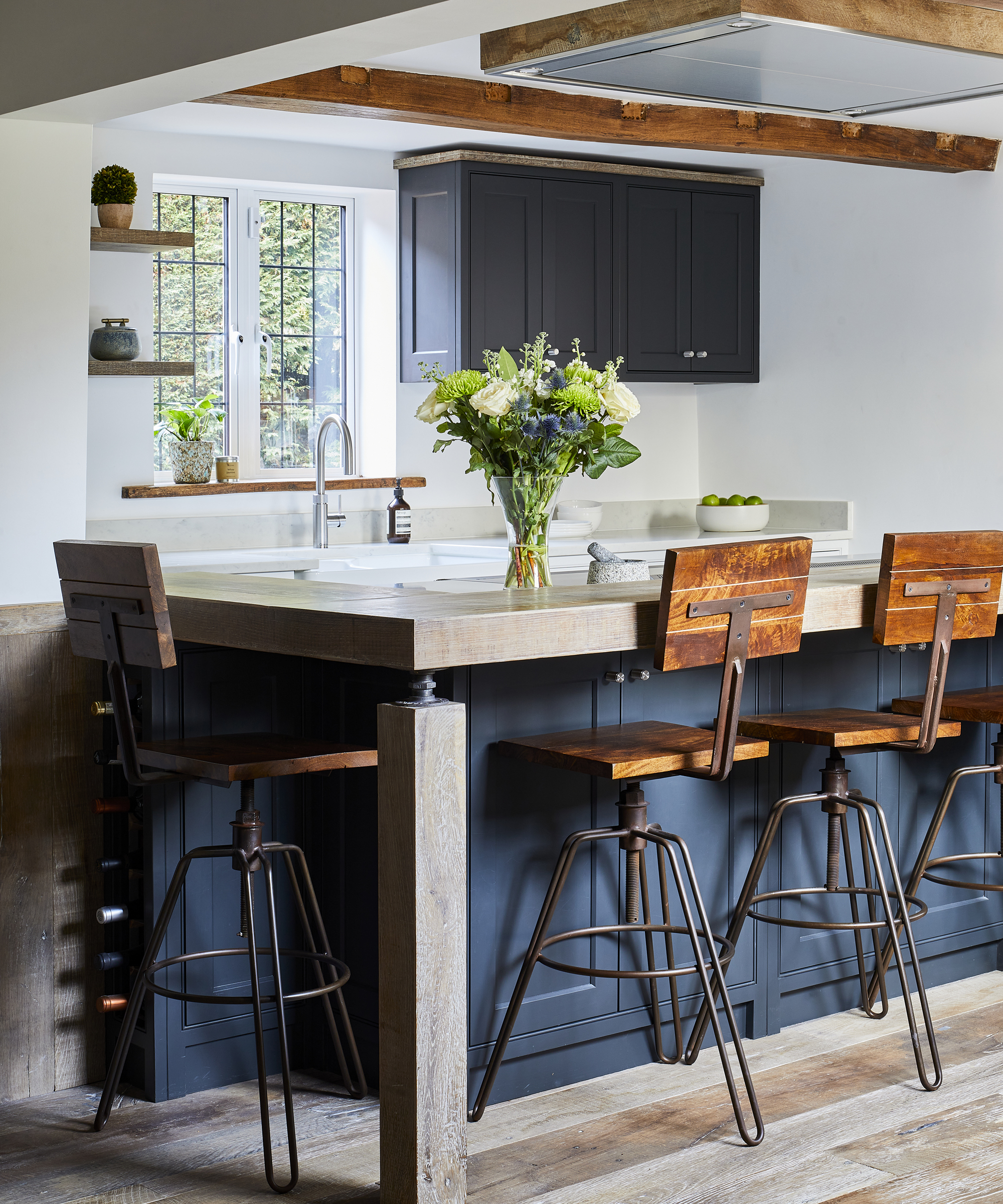
The kitchen island ideas were a huge part of the design for this space – not just to create the kind of social atmosphere the family craved, but as a key functional aid. As well as the reclaimed timber-topped breakfast bar that reaches around its corner, the island also houses ample storage, both a Caple wine fridge and a wine rack, a Lanache oven and an integrated glass hob. The island is not just a communal center for the space, but is the kitchen’s beating heart.
3. Bolt on a boot room
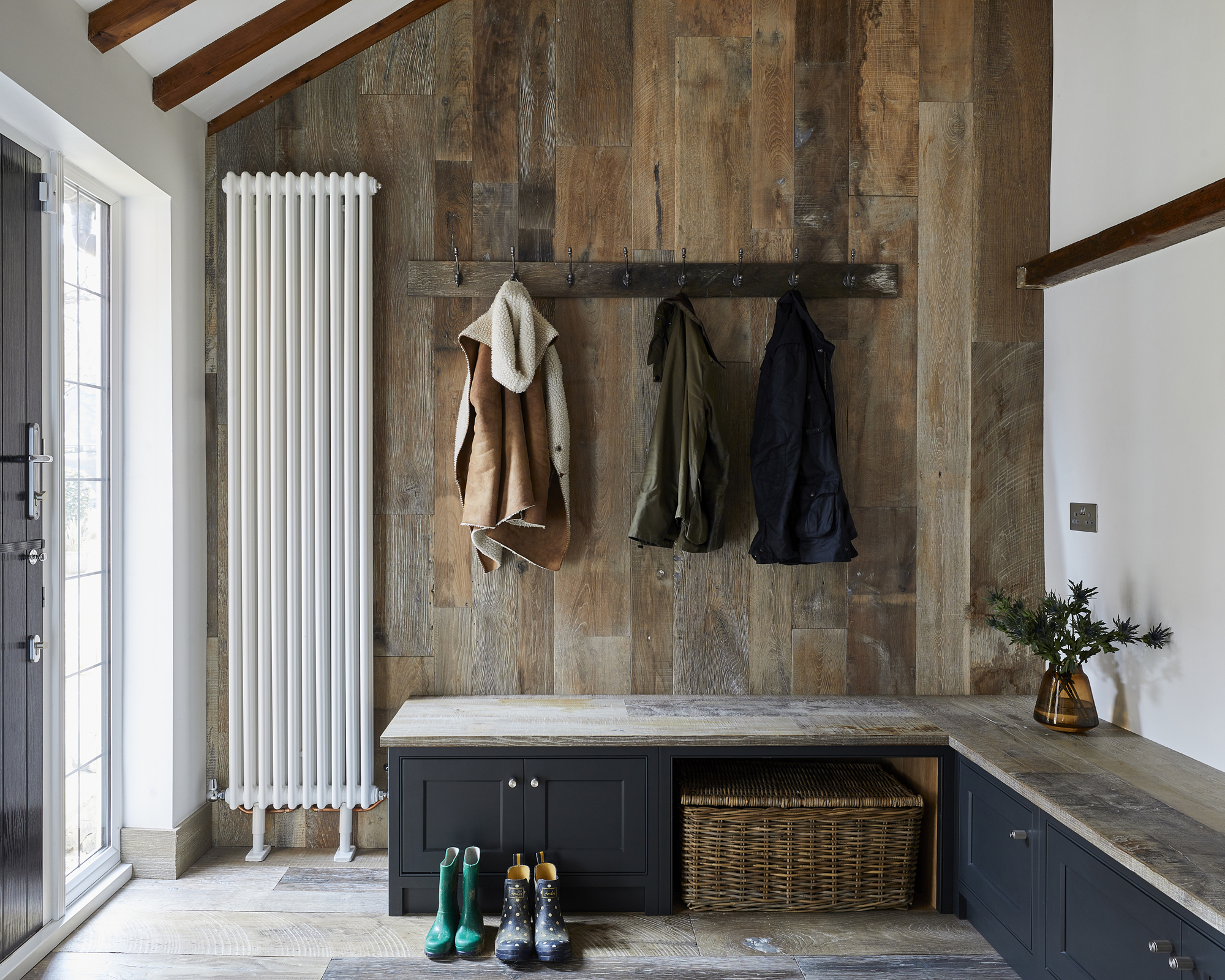
‘One of my favourite parts of this design is the bespoke boot room,’ said Main, discussing the mudroom ideas they added to the top corner of the L-shaped kitchen space. ‘We supplied reclaimed cladding, which not only created an impactful feature wall but perfectly complemented the more rustic, traditional elements of the property, including oak beams, metal accents and exposed brickwork.’
Using a nook like this for a deliberate purpose is a great way of creating natural flow in an awkwardly shaped space, and allows for a brief, boot-removing repose before entering into the throng of the kitchen.
4. Create depth with tones of grey
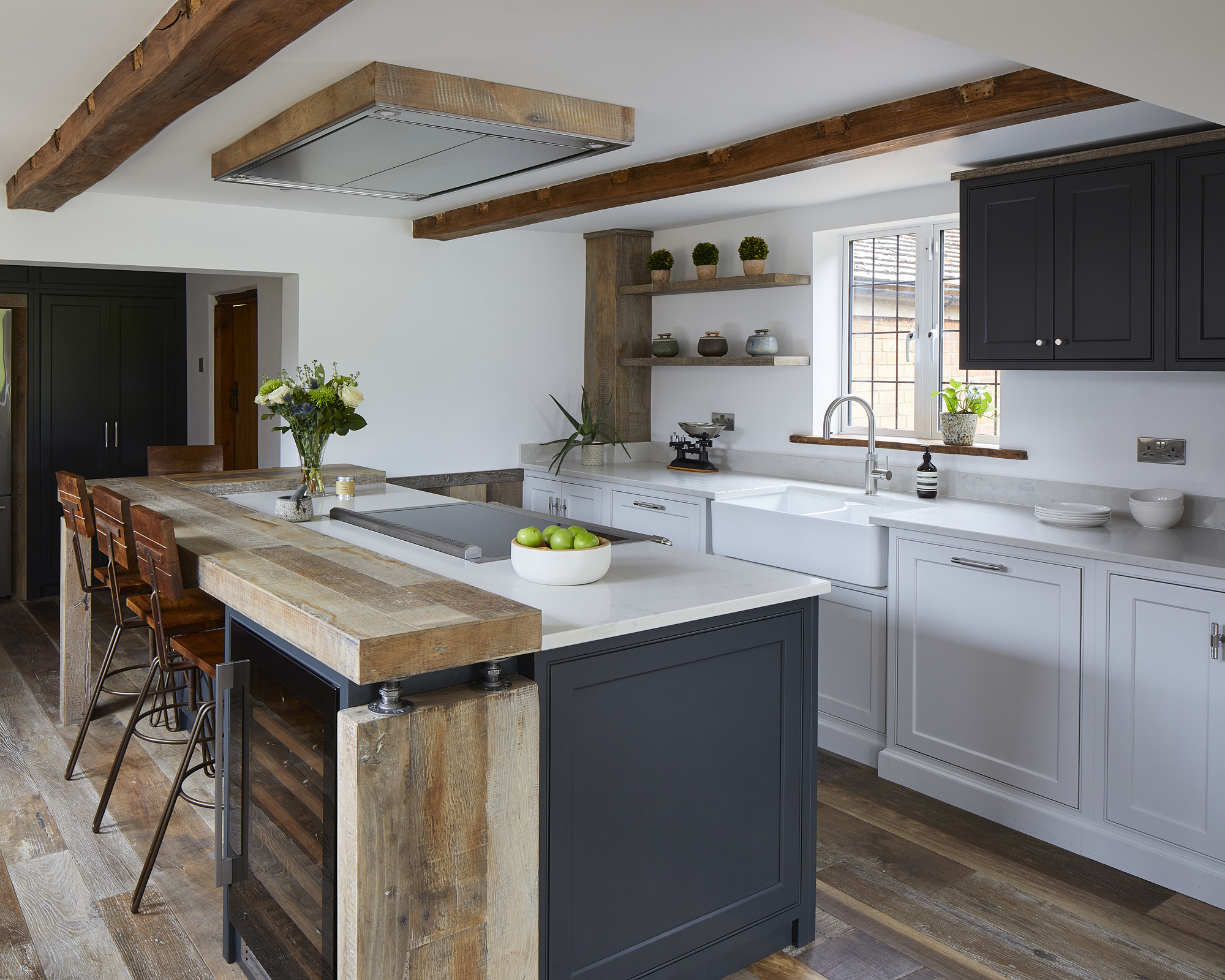
Grey kitchen ideas are a huge trend at the moment, and this room is certainly in the loop. Not one, but two types of grey are used for the shaker-style cabinets in this kitchen – a dark blue-grey ‘Basalt’ and a pale ‘Ceviche’, both from Little Greene. Not only are these color choices perfectly contemporary neutrals that ground the space in the 2020s, but their tonal nature helps add depth to the kitchen’s design.
5. Mix rusticity with sleek modern touches
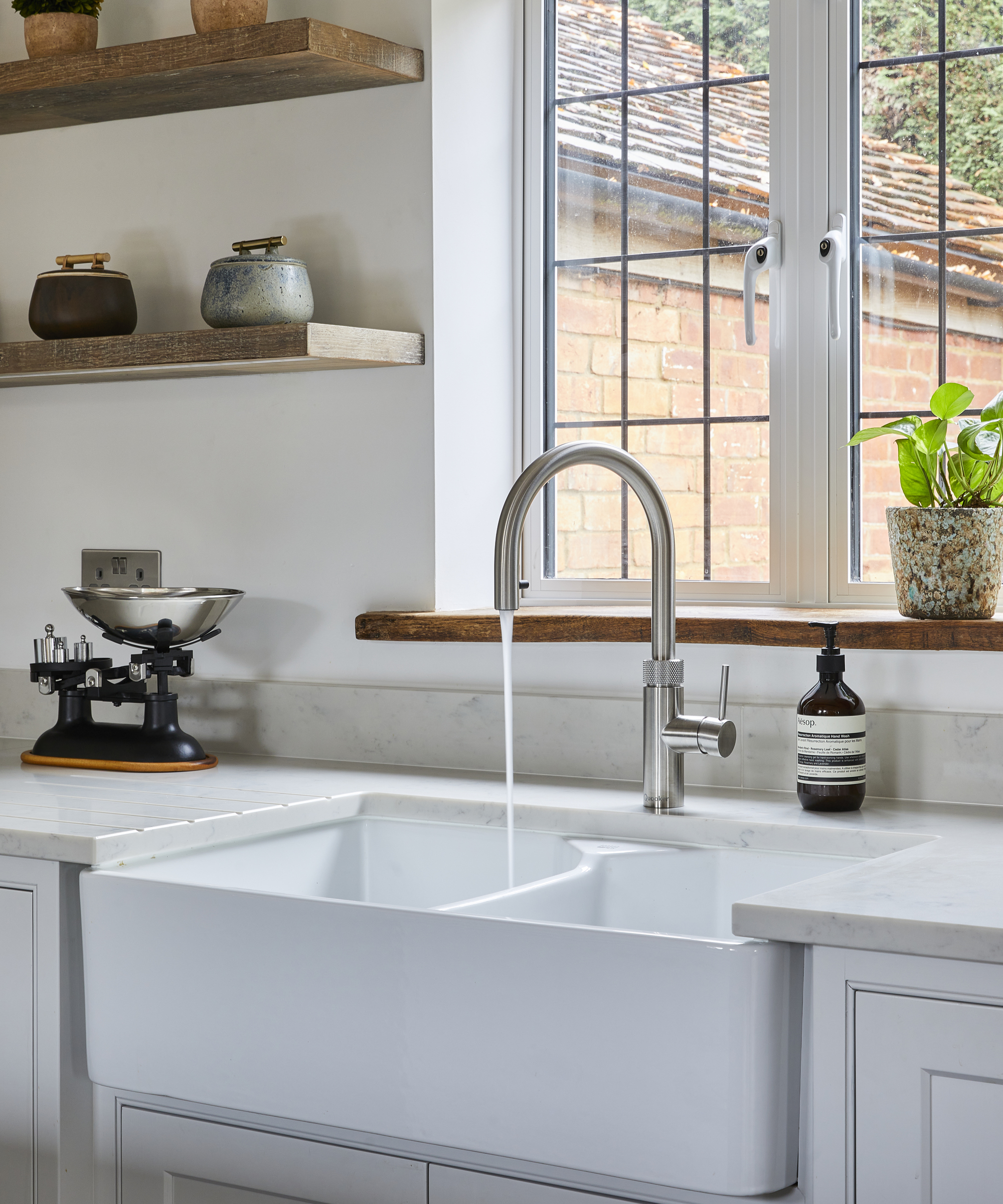
As well as the paint choice, this rustic kitchen is given balance through the use of numerous, but subtly deployed modern kitchen ideas. The brushed stainless steel Quooker tap matches the glimmering metallics of the large Fisher & Paykel fridge-freezer, as well as the high tech Westin extractor fan that has been installed in the ceiling above the island’s hob. As well as these more obvious mod cons, the rustic textures of the wooden accents is balanced out by the seriously slick worktops, made from Omega Stone’s Westminster White quartz.
Kitchen design / The Main Company
Photography / Chris Snook
Sign up to the Homes & Gardens newsletter
Design expertise in your inbox – from inspiring decorating ideas and beautiful celebrity homes to practical gardening advice and shopping round-ups.

Ailis started out at British GQ, where a month of work experience turned into 18 months of working on all sorts of projects, writing about everything from motorsport to interiors, and helping to put together the GQ Food & Drink Awards. She then spent three years at the London Evening Standard, covering restaurants and bars. After a period of freelancing, writing about food, drink and homes for publications including Conde Nast Traveller, Luxury London and Departures, she started at Homes & Gardens as a Digital Writer, allowing her to fully indulge her love of good interior design. She is now a fully fledged food PR but still writes for Homes & Gardens as a contributing editor.
-
 How to clean a patio – 6 different methods, and when you must use a chemical cleaning agent
How to clean a patio – 6 different methods, and when you must use a chemical cleaning agentFrom manual scrubbing, natural solutions or calling in the pros, industry experts reveal the benefits and considerations of each method
By Andy van Terheyden Published
-
 Kris Jenner's favorite air fryer, the Ninja Crispi, is the perfect small kitchen solution – it deserves a place on the most compact of countertops
Kris Jenner's favorite air fryer, the Ninja Crispi, is the perfect small kitchen solution – it deserves a place on the most compact of countertopsKris approves of this compact yet powerful air fryer, and so do our own kitchen appliance experts, praising it for its multifunctionality
By Hannah Ziegler Published